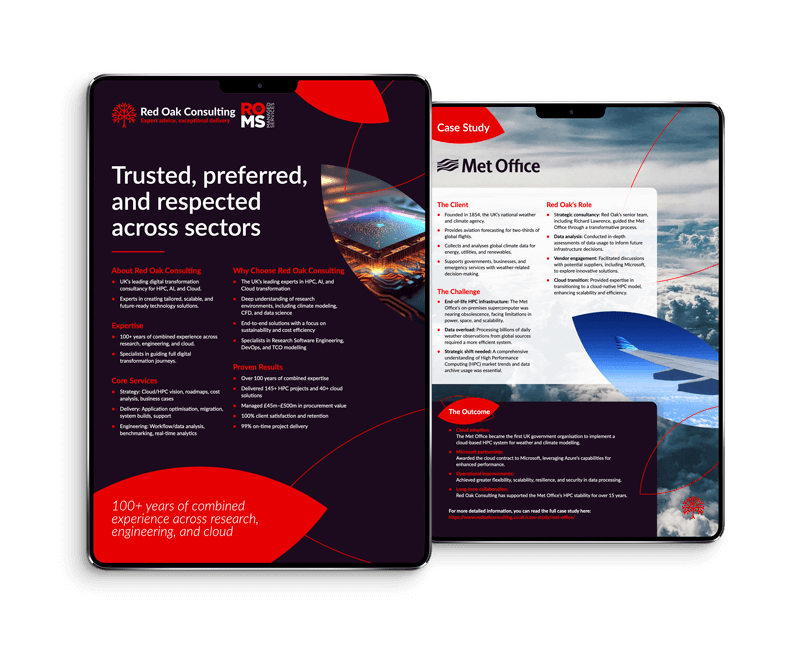Assessing Your Organisation
With hundreds of HPC consulting projects under its belt, Red Oak has worked with organisations which embrace HPC to varying degrees.
Perhaps you would like to assess where your organisation fits in terms of its maturity with respect to HPC? If so, you’re in the right place as this article outlines some thoughts from our consultants on organisational behaviours which we believe are good indicators of a higher level of organisational HPC maturity.
We start to assess organisational HPC maturity based on four high-level aspects:
- the state of a supported HPC service and the quality of support available.
- funding model.
- governance.
- and vendor interaction.
In the following sections, we discuss these aspects further.
HPC Support Service
The HPC support service refers specifically to user support quality. As an example, the most basic of support services generally lacks documentation and offers ad-hoc support, most likely by a senior user. There is no official HPC support service. 
The most successful HPC support services show a constant interest in improving user experience and exhibit a proactive approach to support.
This means identifying the root causes of problems to ensure they do not occur again. These services have sponsorship or interest from the highest levels of a business and have a disaster recovery strategy in place.
Funding
This refers to how the HPC service is funded. The most basic form of funding consists of repurposing other budgets for use on HPC.
 At this stage, there is no specific HPC budget. Organisations at this level tend to be focused more on hardware purchase costs rather than maintenance costs and the overall value generated to the business.
At this stage, there is no specific HPC budget. Organisations at this level tend to be focused more on hardware purchase costs rather than maintenance costs and the overall value generated to the business.
The most mature funding models have a well-developed HPC value model.
Organisations at this level see HPC as value generating and are interested in generating a maximum return on investment.
Those responsible for managing the HPC service can effectively lobby for and receive funding for upgrades.
 Governance
Governance
This refers to the management of the HPC service outside of funding and user support.
At the most basic level, there may be no official governance structure with the HPC service being a component equivalent to a ‘shadow IT’ estate.
In the most mature organisations, HPC forms a part of the overall corporate strategy.
HPC at this stage usually forms part of the central IT department and is actively involved in interdepartmental dialogue.
Vendor Interaction
 This refers to the process by which new HPC systems are obtained. At the most basic level, HPC-like systems are obtained on a case-by-case basis.
This refers to the process by which new HPC systems are obtained. At the most basic level, HPC-like systems are obtained on a case-by-case basis.
Vendor interaction is rarely involved with components being purchased off-the-shelf or online from resellers.
In the most mature organisations, there is interaction between the highest levels of management of the customer and vendor.
The purchase of an HPC system is considered worthy of attention of the highest levels of the business.
Summary
To summarise, this article has briefly discussed four features which our consultants believe are important to consider when assessing your organisation’s HPC maturity.
For each feature, aspects of the least and most mature organisations have been discussed based on our experience.
For a more in-depth discussion on this topic, please get in touch with us.

Manveer Munde
Principal Consultant


